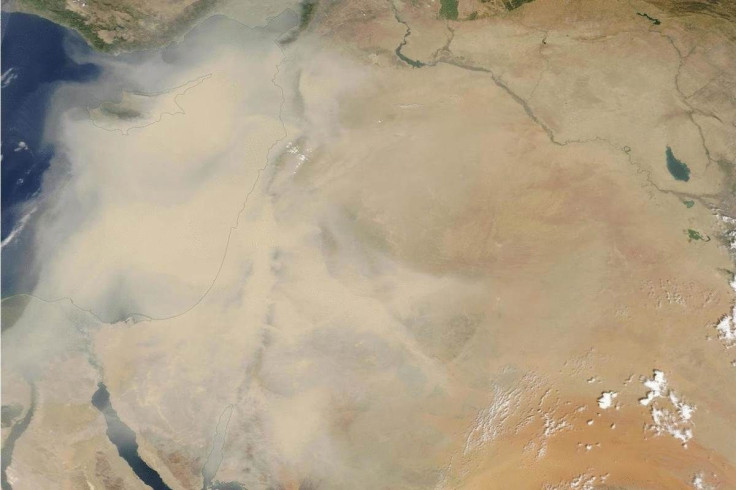Israel engulfed in dust, Syria air strike slows down as killer sandstorm hits Middle East; NASA shares an image from space

A deadly sandstorm has hit the Middle East, leaving hundreds of civilians on hospital beds. The storm that has swept across the region has disrupted the airstrikes and fighting in neighbouring Syria, and reportedly killed eight people on Sept 8.
Following the storm that engulfed Israel, Cyprus and Jordan, all airlines were diverted to Paphos from Larnaca airport as the visibility drastically reduced to 500 metres. According to the Cypriot meteorological office, such an intensity of the sandstorm has never been observed before in the area. It's a rare phenomenon to be observed at this time of the year, and the storm has covered almost the entire region, reported Reuters.
The storm has impacted the frequency of the Syrian air strikes. A lower number of airstrikes were observed on Sept 7 due to the disruption from the storm. The Health Ministry of Lebanon first confirmed that two people died due to the storm, however, the toll later reached eight. So far, more than 750 people have been admitted to the hospitals because of respiratory illness or problems.
The Aeronautics and Space Administration, or NASA, recently released an image of the sandstorm covering the Middle East. In the image, the swirling dust and sand covering Iraq, Jordan, Lebanon and Syria can be clearly seen. The storm, which poses a major health hazard to the people in the Middle East, is expected to continue until Sept 9.
Health authorities have urged people to stay in their homes and avoid contact with dust to prevent any kind of respiratory illness or breathing problems. Schools have been asked to keep all the physical activities indoors till the storm clears away.
Contact the writer at feedback@ibtimes.com.au, or let us know what you think below.




















